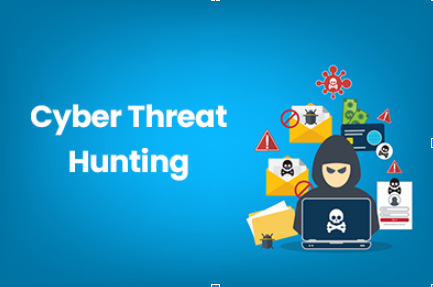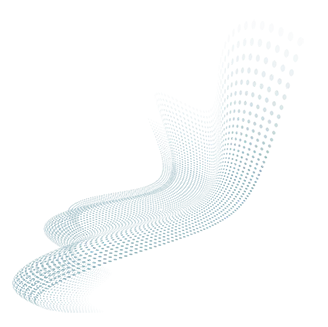What is Threat Hunting?
Some malicious files may still successfully bypass your defenses. If undetected, these files can gather confidential materials or login credentials for months or years. If you don't have the detection capabilities you need to hunt these malicious actors down, they will continue to do so. A good defense needs both endpoint security and proactive threat detection.

Threat Hunting is not a new concept but has evolved significantly with technological advancements. In the early days of cybersecurity, it was primarily reactive, responding to threats as they were detected. However, as cyber attackers have become more sophisticated, relying solely on automated defenses is no longer sufficient. Modern threat hunters use advanced tools and techniques like machine learning, artificial intelligence, and big data analytics to predict and preempt cyber-attacks.
The Role of a Threat HunterA threat hunter is part detective, part analyst. They sift through data, looking for anomalies and patterns that might indicate a breach or an impending attack. This process involves analyzing network traffic, logs, and endpoint data. They also stay informed about the latest cyber threats and use this knowledge to refine their search. They aim to find the needle in the haystack—uncovering subtle clues that automated systems might miss.
Techniques and Tools in Threat HuntingThreat Hunting requires a unique set of tools and techniques. Some of these include:
- Hypothesis-Driven Investigation: This involves creating hypotheses based on current threat intelligence and using them to guide the search for potential threats.
- Behavioral Analytics: By understanding the normal behavior of a system, threat hunters can spot deviations that might indicate a threat.
- Threat Intelligence: Utilizing up-to-date information about existing and emerging threats helps anticipate the attacks that might be used against a network.
- Endpoint Detection and Response (EDR): EDR tools provide valuable data about endpoint activities, which is crucial in identifying malicious actions.
The benefits of Threat Hunting are immense. By proactively identifying and mitigating threats, organizations can:
- Prevent Data Breaches: Detecting threats early can prevent them from escalating into full-blown breaches.
- Reduce Response Time: Quick identification leads to faster response and remediation.
- Stay Ahead of Attackers: Continuous monitoring and learning about attacker tactics help stay ahead.
- Save Costs: By preventing major breaches, Threat Hunting can save organizations from the substantial costs associated with data loss and system downtime.
Threat Hunting is an essential component of a robust cybersecurity strategy. In an era where cyber threats are increasingly sophisticated, the role of threat hunters becomes ever more critical. Organizations can better prepare themselves against the myriad cyber threats lurking in the digital world by understanding what Threat Hunting is and how it works. With Xcitium’s expertise in Threat Hunting, your organization can ensure a higher level of security, safeguarding your valuable data and infrastructure against the unforeseen dangers of the cyber landscape.
Why Choose Xcitium for Cyber Threat Hunting?
In cybersecurity's intricate and ever-evolving realm, selecting the right partner for cyber threat hunting is critical. Xcitium is a leader in this field, offering unparalleled expertise, cutting-edge technology, and a commitment to proactive defense. Here’s why Xcitium should be your go-to choice for Cyber Threat Hunting:
1. Proven Expertise and ExperienceAt Xcitium, we pride ourselves on our team of highly skilled threat hunters. Our experts are well-versed in the latest cybersecurity practices and bring years of experience in dealing with a wide range of cyber threats. This blend of knowledge and expertise enables us to identify and neutralize advanced threats that others might miss effectively.
2. State-of-the-Art TechnologyLeveraging the latest cybersecurity technology is at the heart of our threat-hunting services. We employ advanced tools such as AI-driven analytics, sophisticated endpoint detection and response systems, and comprehensive threat intelligence networks. This technological edge allows us to detect subtle signs of malicious activity and respond swiftly.
3. Customized Approach to SecurityWe understand that every organization has unique security needs. That’s why our approach to threat hunting is not one-size-fits-all. We tailor our strategies to align with your specific network environment, business objectives, and security requirements, ensuring a personalized and effective defense mechanism.
4. Comprehensive Threat IntelligenceStaying ahead in cybersecurity means keeping abreast of the latest threat developments. Xcitium’s threat intelligence is extensive and continually updated, allowing us to predict and prepare for emerging threats. This proactive stance ensures that your organization is always protected against the latest cyber tactics.
5. Continuous Monitoring and Adaptive StrategiesCyber threat hunting is an ongoing process. Our team continuously monitors your network for signs of suspicious activity. Moreover, our strategies evolve as new threats emerge and your organization grows, ensuring your security posture is always robust and up-to-date.
6. Education and EmpowermentAt Xcitium, we believe in empowering our clients. We provide insights and knowledge transfer, helping your in-house teams understand the threat landscape better. This collaborative approach enhances your security and fosters a culture of cybersecurity awareness within your organization.
7. Exceptional Client SupportOur commitment to our clients goes beyond just providing services. We offer dedicated support, ensuring that you have access to our experts whenever you need them. Our responsive and client-centric approach means your concerns are always our top priority.
Choosing Xcitium for Cyber Threat Hunting means partnering with a leader in cybersecurity. Our expertise, advanced technology, personalized approach, and continuous evolution uniquely equip us to protect your organization from sophisticated cyber threats. With Xcitium, you can be confident that your digital assets are in the hands of experts dedicated to safeguarding your business in the digital realm.
Threat Hunting FAQ
Q1. What exactly is Cyber Threat Hunting, and how does it differ from traditional security measures?Cyber Threat Hunting is a proactive approach to cybersecurity where specialists actively search for and mitigate hidden cyber threats within a network. Unlike traditional security measures that often rely on automated systems to detect threats, threat hunting involves a combination of advanced technology, strategic analysis, and human expertise to identify subtle signs of compromise that automated tools might miss. This approach ensures a deeper layer of security by preemptively identifying and addressing potential threats.
Q2. How often should my organization engage in Threat Hunting activities?The frequency of Threat Hunting activities can vary depending on several factors, such as the size of your organization, the nature of your data, and your overall risk profile. However, as a general best practice, it's recommended to conduct continuous monitoring with periodic intensive threat-hunting exercises. Xcitium offers tailored Threat Hunting services that can be customized to meet your organization's specific needs and schedule, ensuring optimal protection at all times.
Q3. What are the primary benefits of using Xcitium’s Threat Hunting services?The primary benefits of using Xcitium’s threat-hunting services include enhanced detection and mitigation of advanced threats, reduced risk of significant security breaches, and a more robust overall cybersecurity posture. Our expert team uses state-of-the-art technology and methodologies to proactively identify threats, helping to prevent damage before it occurs. Additionally, our customized approach ensures that our services are tailored to your organization's unique needs and challenges, providing a more effective and efficient cybersecurity solution.
